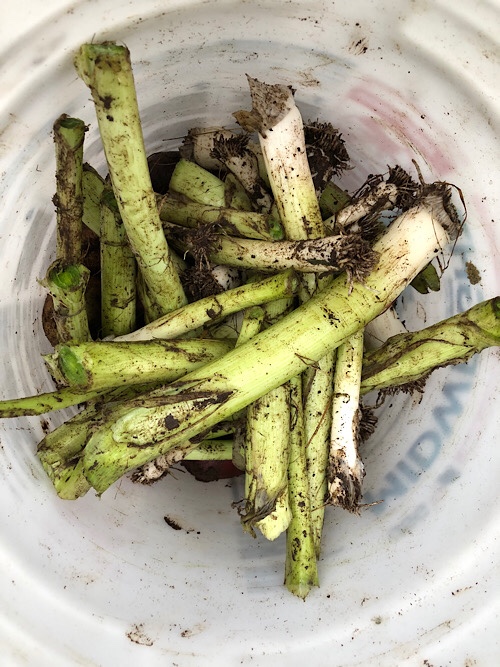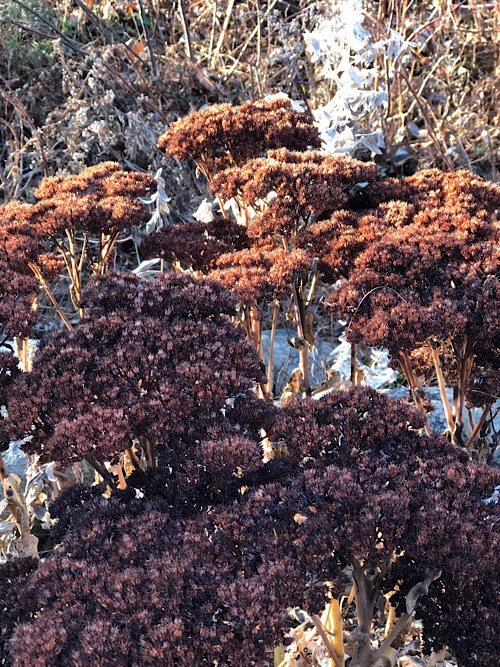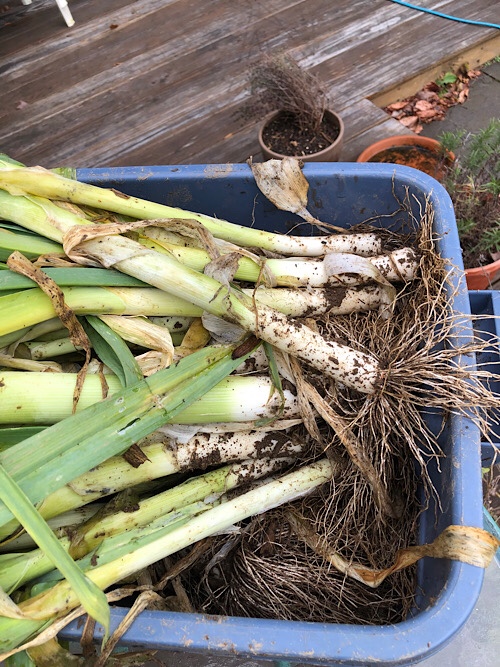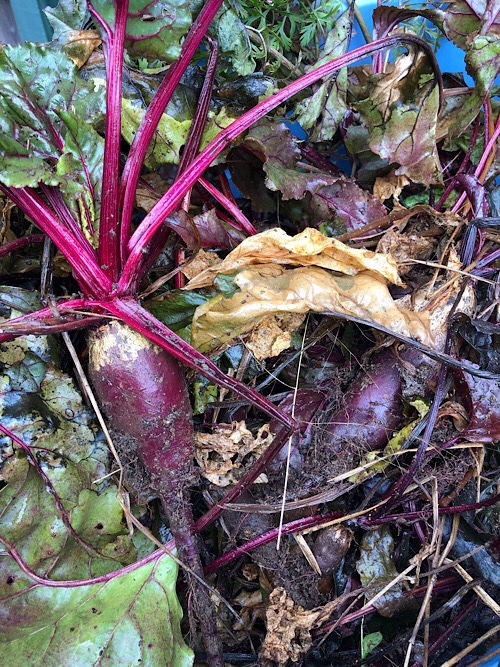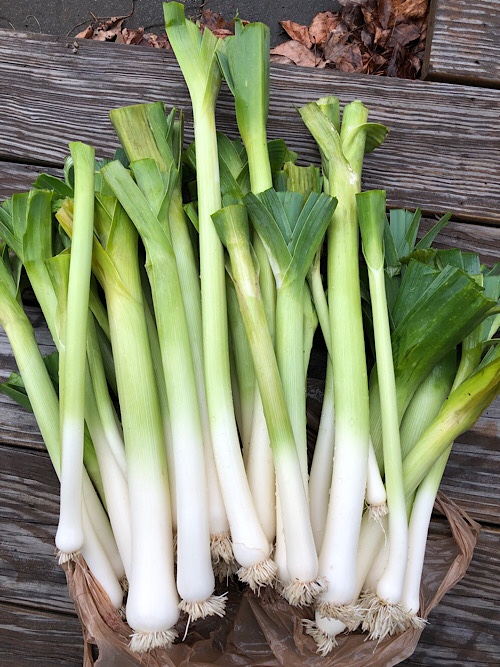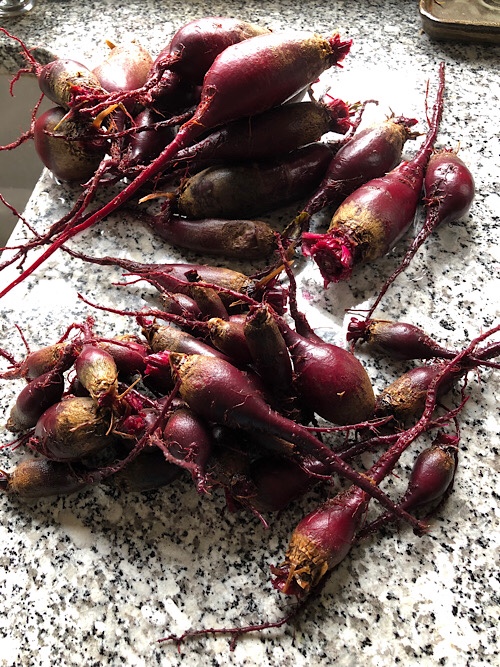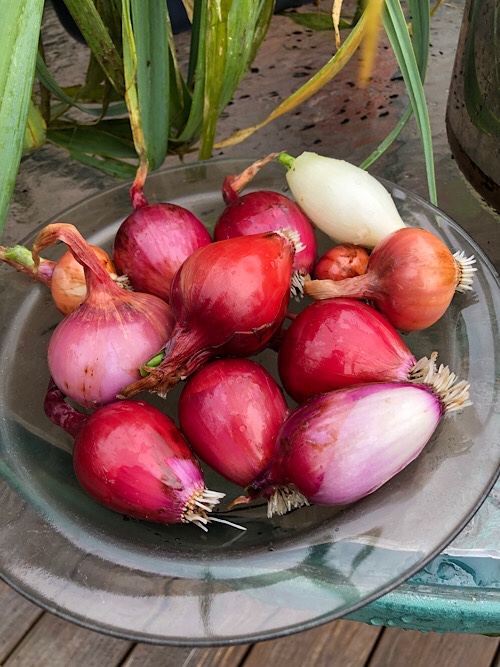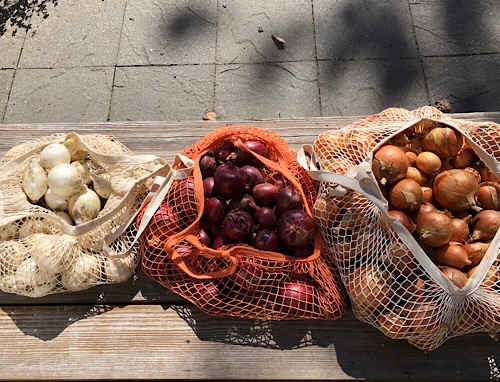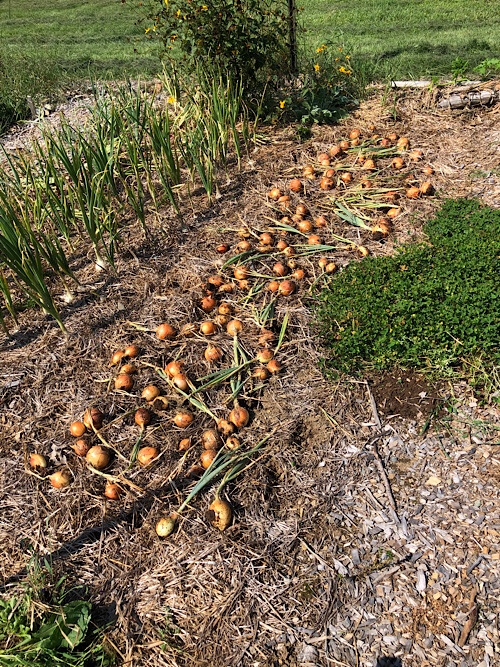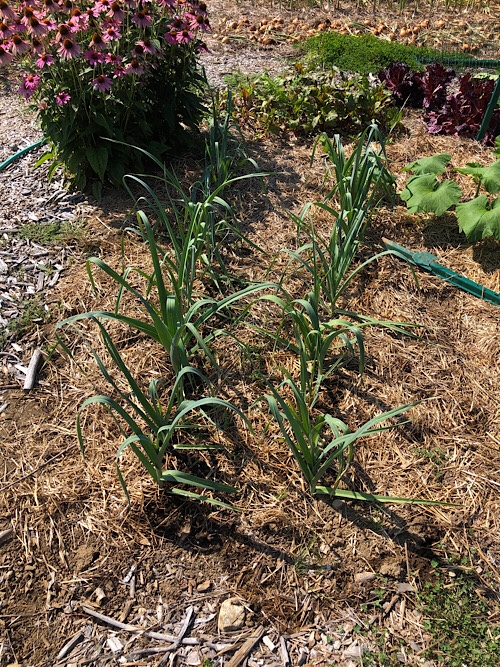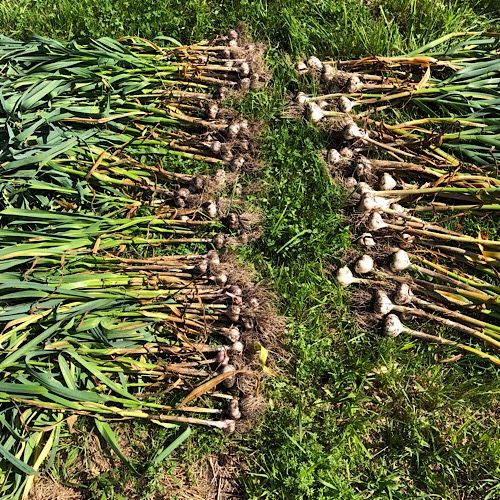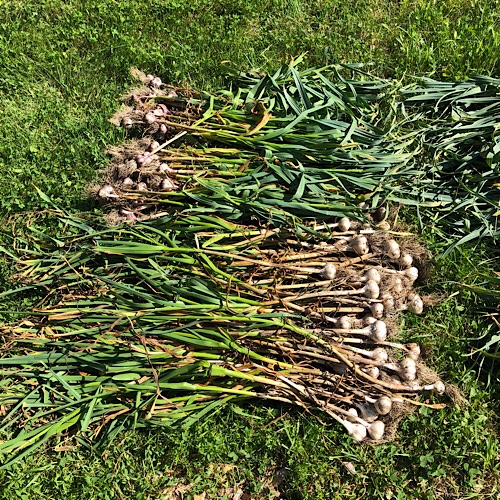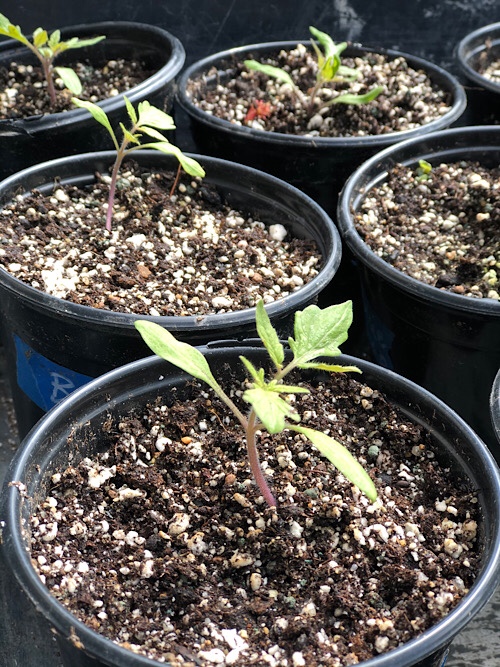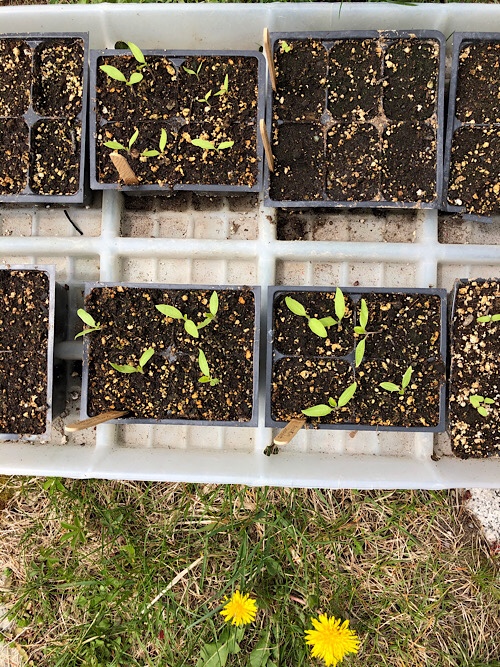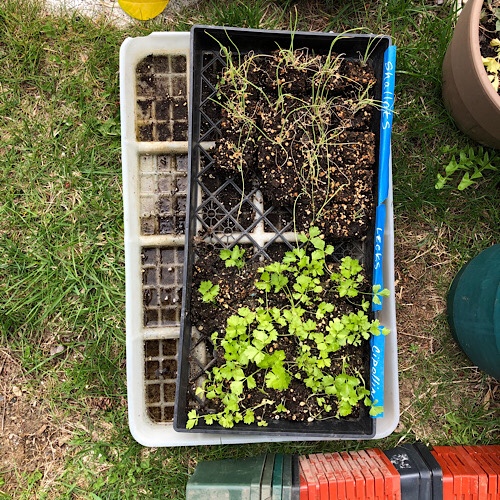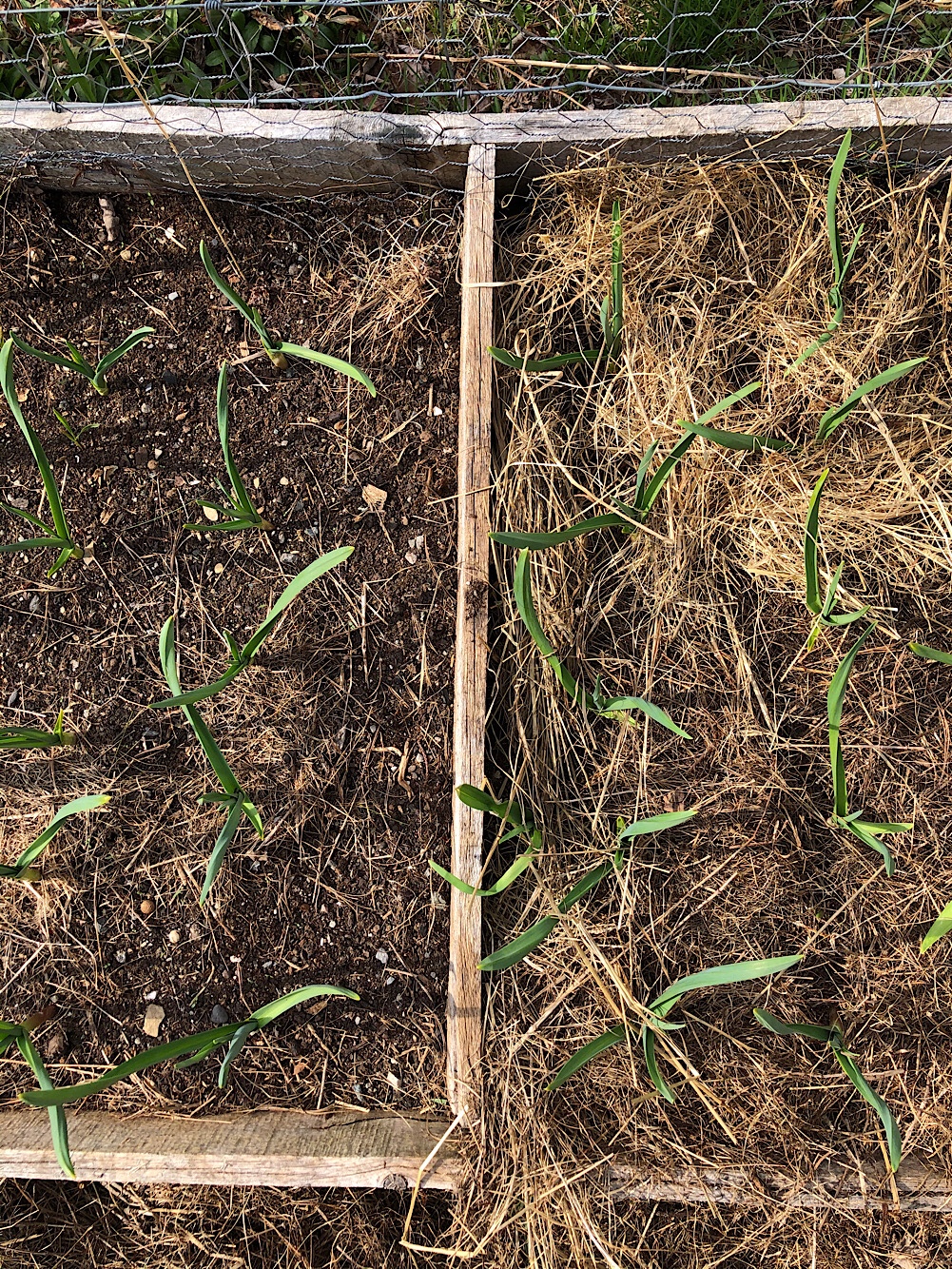The weather warmed up and it wasn’t raining, yet. So Sam and I spur-of-the-moment decided to dig up the rest of the potatoes. It was an adventure. Exciting to find these big tubers glowing in the partly frozen ground under mounds of hay mulch. The varieties are Katahdin (white), Adirondack Blue and Adirondack Red. Maybe next season, less colors and more white. There’s something unnerving about finding red and blue colors in your food.
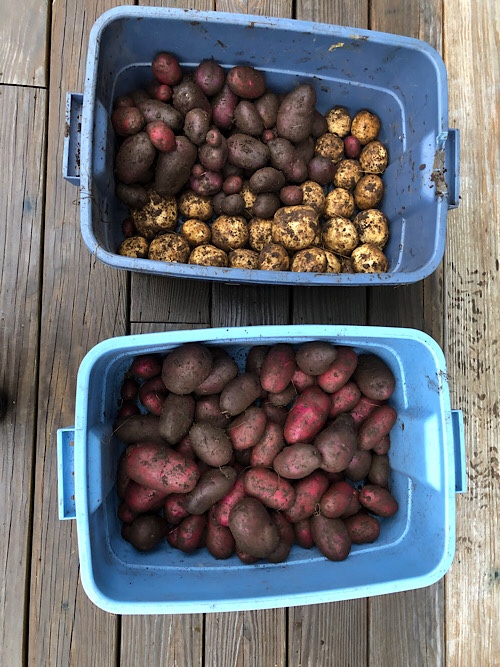
These are now drying on a table inside under cardboard. Then they will go into cold storage in the pantry.
And then for good measure, we dug up a patch of very dirty leeks. I did not want to do this, but Sam forged ahead. I didn’t think there would be anything salvageable, but after a few slimy layers were scraped off, there was another bunch of perfectly good leeks for the fridge.
